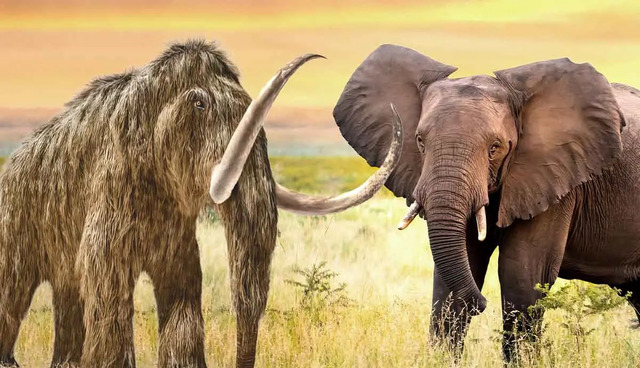When we talk about the common ancestors of mammoths and Elephants-Are-Endangered.html">elephants, we dive into a fascinating world of prehistoric giants and their evolutionary journey. Mammoths and Elephants-Are-Endangered.html">elephants are part of the same family, Elephantidae, and their shared history stretches back millions of years. But which species tie these modern-day and extinct giants together? Let’s explore the story of their lineage and how they connect.

Mammoth and Elephant
Mammoths and elephants are close relatives, all belonging to the Elephantidae family. This family includes:
Modern elephants: African elephants (Loxodonta africana), forest elephants (Loxodonta cyclotis), and Asian elephants (Elephas maximus).
Mammoths: Most famously the woolly mammoth (Mammuthus primigenius), along with other species like the Columbian mammoth (Mammuthus columbi).
Their common ancestors lived millions of years ago, evolving into the diverse species we recognize today.
The most recent common ancestor of mammoths and modern elephants is believed to be Primelephas, an extinct genus that lived around 7–5 million years ago during the late Miocene epoch.
Primelephas gomphotheroides, a specific species, is often considered the direct ancestor of both mammoths and modern elephants.
This ancestor had features like tusks and a body size similar to modern elephants but wasn’t as specialized for cold climates as mammoths became later.
Primelephas eventually split into two lineages:
Mammuthus (mammoths)
Elephas and Loxodonta (modern elephants)
The Mammuthus genus includes a variety of mammoth species, with the woolly mammoth (Mammuthus primigenius) being the most iconic.
Adaptations: Mammoths evolved to survive the Ice Age with thick fur, a hump of fat for energy storage, and long, curved tusks.
Timeline: Mammoths first appeared around 5 million years ago and became extinct approximately 4,000 years ago, with some surviving on Wrangel Island.
Today, the Elephantidae family is represented by three species of modern elephants:
African savanna elephants (Loxodonta africana)
African forest elephants (Loxodonta cyclotis)
Asian elephants (Elephas maximus)
These elephants share many physical and behavioral traits with their mammoth ancestors, including their tusks and trunk.
Mammoths and elephants have striking similarities, thanks to their shared ancestry:
Tusks: Both have elongated incisors used for digging, defense, and social interactions.
Trunks: A versatile appendage for grabbing food, drinking water, and even showing affection.
Social behavior: Both were highly social, living in herds led by matriarchs.
Despite these similarities, their adaptations diverged due to environmental needs, with mammoths thriving in cold climates and elephants adapting to warmer habitats.
Fossil records and genetic studies have confirmed the close relationship between mammoths and elephants.
DNA sequencing has shown that Asian elephants are more closely related to mammoths than to African elephants.
Studies suggest mammoths and Asian elephants shared a common ancestor roughly 6 million years ago.
The mammoths’ extinction was caused by a combination of:
Climate change: Warming temperatures after the Ice Age reduced their cold-adapted habitats.
Human hunting: Early humans hunted mammoths for food, fur, and bones.
Modern elephants face similar threats today, emphasizing the importance of conservation.
Understanding the shared history of mammoths and elephants offers insights into evolution, climate adaptation, and conservation. It reminds us of the fragility of species and the impact of environmental changes.
What is the closest living relative to the mammoth?
The Asian elephant (Elephas maximus) is the closest living relative of the woolly mammoth (Mammuthus primigenius).
When did mammoths and elephants split from a common ancestor?
Mammoths and modern elephants likely diverged from a common ancestor, Primelephas, around 6 million years ago.
Are there efforts to bring back the mammoth?
Yes! Scientists are exploring de-extinction projects, attempting to revive mammoth traits using Asian elephant DNA and advanced genetic technology.
Understanding which mammoth and elephant species are recent common ancestors enriches our appreciation of their evolutionary journey. These incredible animals, past and present, are a testament to nature’s resilience and adaptability. Let’s ensure the lessons from their history guide our efforts to protect their modern relatives!
We created this article in conjunction with AI technology, then made sure it was fact-checked and edited by a Animals Top editor.